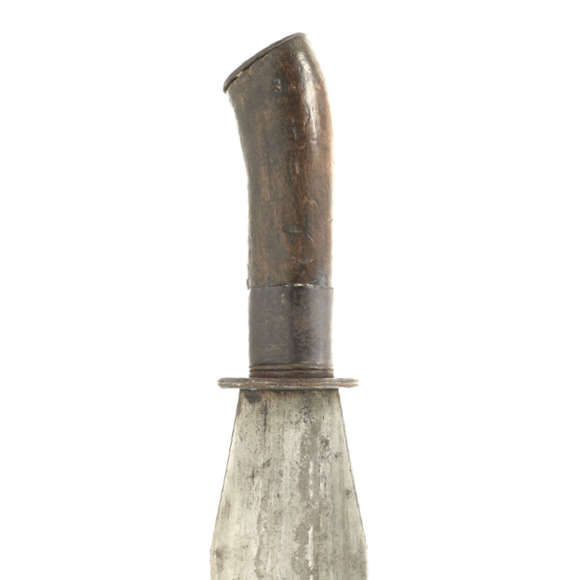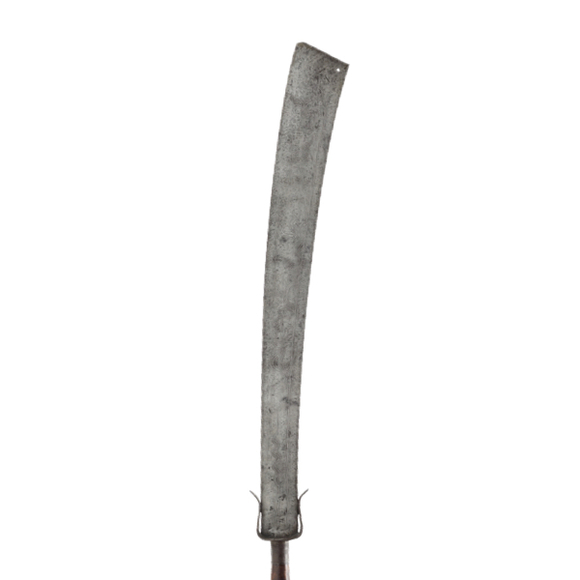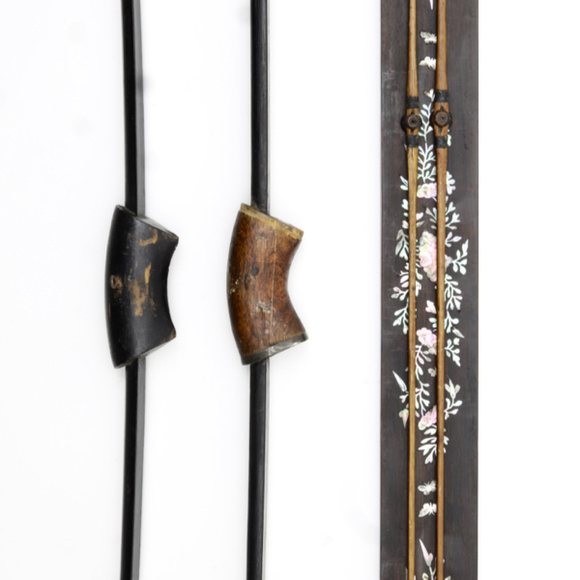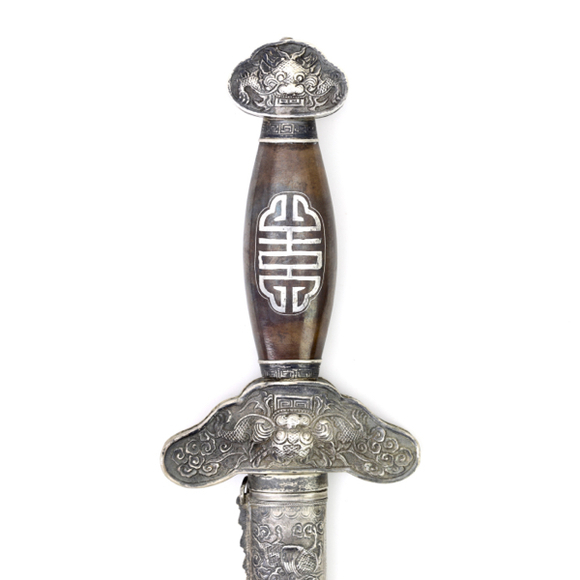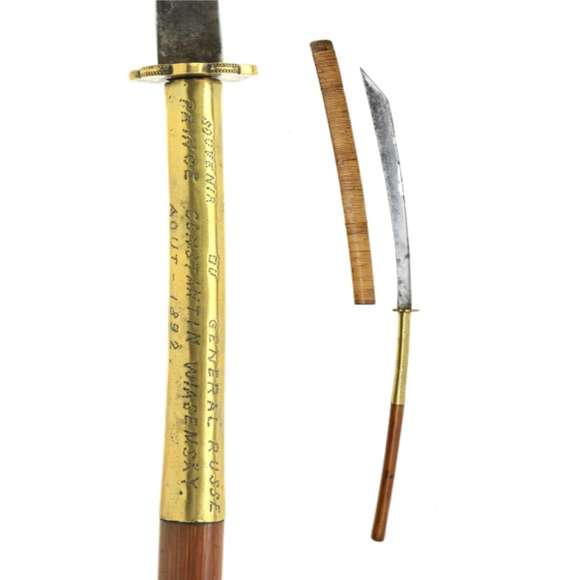Description A rather unusual Vi

73 cm / 28.7 inch
57.5 / 22.6 inch
Base 7.5 mm
Middle 5 mm
Near tip 4 mm
734 grams
Vietnam
Iron, steel, bronze
Probably 16th century
Introduction
In the 16th century, political unrest in Japan caused many Japanese sailors, merchants, craftsman, and leaderless samurai or ronin to flee the country. At the time China was largely closed for maritime trade, so many of them sailed along the southern Chinese coast until they reached Vietnam, and sought their fortune there. The Japanese swords brought by these immigrants must have left quite an impression on the Vietnamese, because we see profound Japanese influence on Vietnamese weapons from this period onwards.
This example
Offered for sale we have an excavated Vietnamese saber, or guőm in Vietnamese. The heavy, facetted blade curves most near the handle side and straightens towards the tip. This is a typical feature of Japanese swords which they call koshizori or "waist curve" and was quite popular in the Muromachi period (1336 to 1573). The blade might very well be a Japanese import, possibly brought by the many Japanese immigrants that settled in Vietnam during this period.
The thick bronze guard is of stylized chrysanthemum shape. The shape, including the apertures on either side of the blade were inspired by Japanese examples. See some examples in the A. H. Church Collection of Japanese Sword-Guards in the Ashmolean museum, Oxford.
On Japanese swords, these openings accommodate the handles of the kogatana and kogai, a knife and hairpin that were held in the scabbard of some Japanese swords. The feature survived as a purely decorative element of Vietnamese sword guards up to well into the 19th century.

The Vietnamese sword that once belonged to Czar Peter the Great, who ruled from 1682 to 1725.
Take special note of the similar guard.
It has a cylindrical bronze handle, or archaic form, with various engraved bands for decoration and to enhance grip. It reminds strongly of the handles early sabers of Cambodia and Burma, including the slight swelling right behind the guard that is seen on later dha and in extreme form on Vietnamese two handed sabers, guőm truong.
Restoration / condition
Steel surface has been stabilized. All bronze is in uncleaned, untouched condition, retaining its "as found" patina. Pommel cap was re-attached. (Pics of procedure available upon request.) Blade in deeply pitted, excavated but stable condition. It retains its original, stiff temper.
Conclusion
A rare example of a very early Vietnamese sword of the 16th century. Showing the strong Japanese influence on Vietnamese sword making that would last until well into the 19th century. It represents an early piece from a vital phase of Vietnamese sword development.
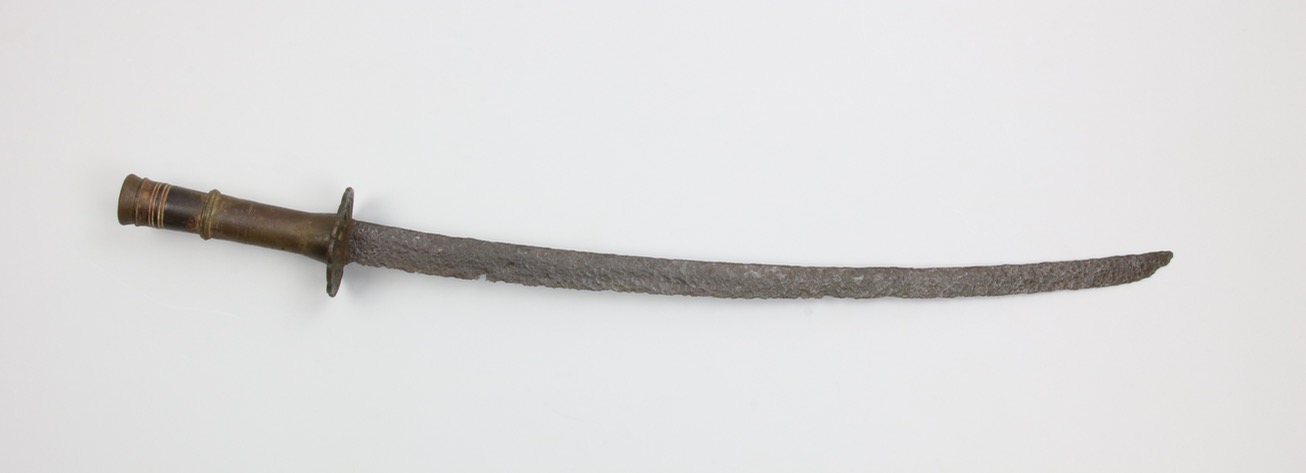


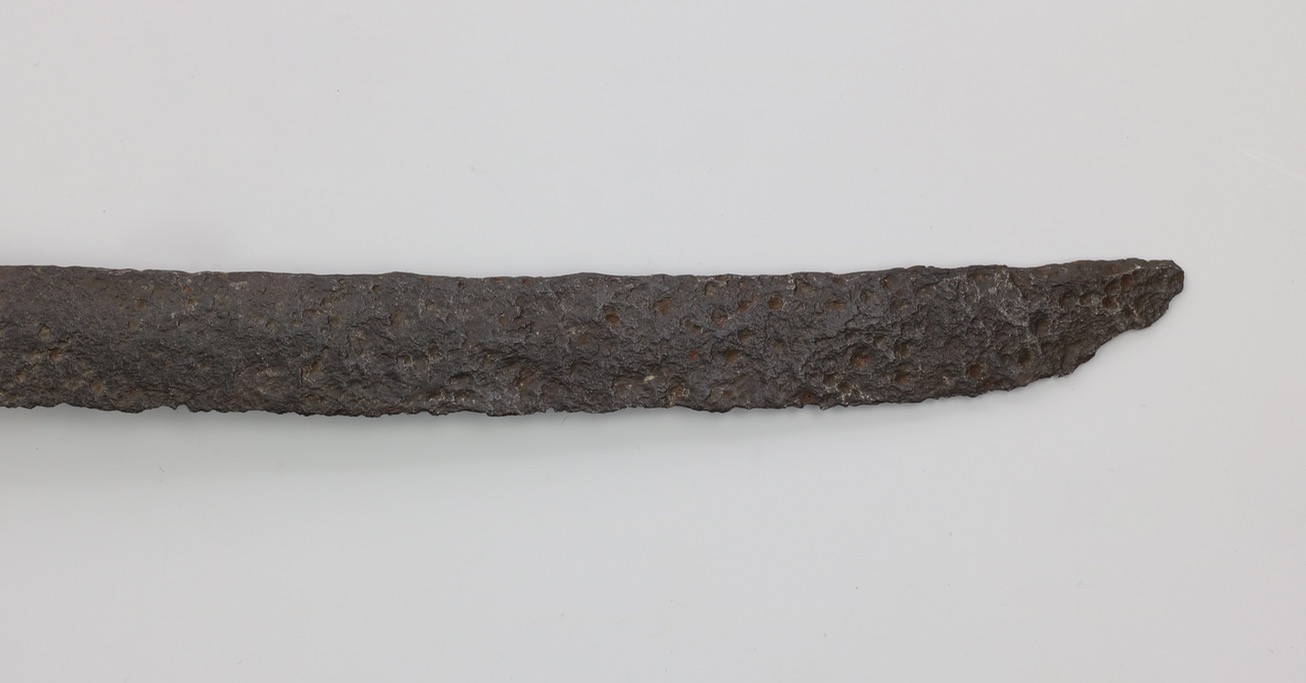

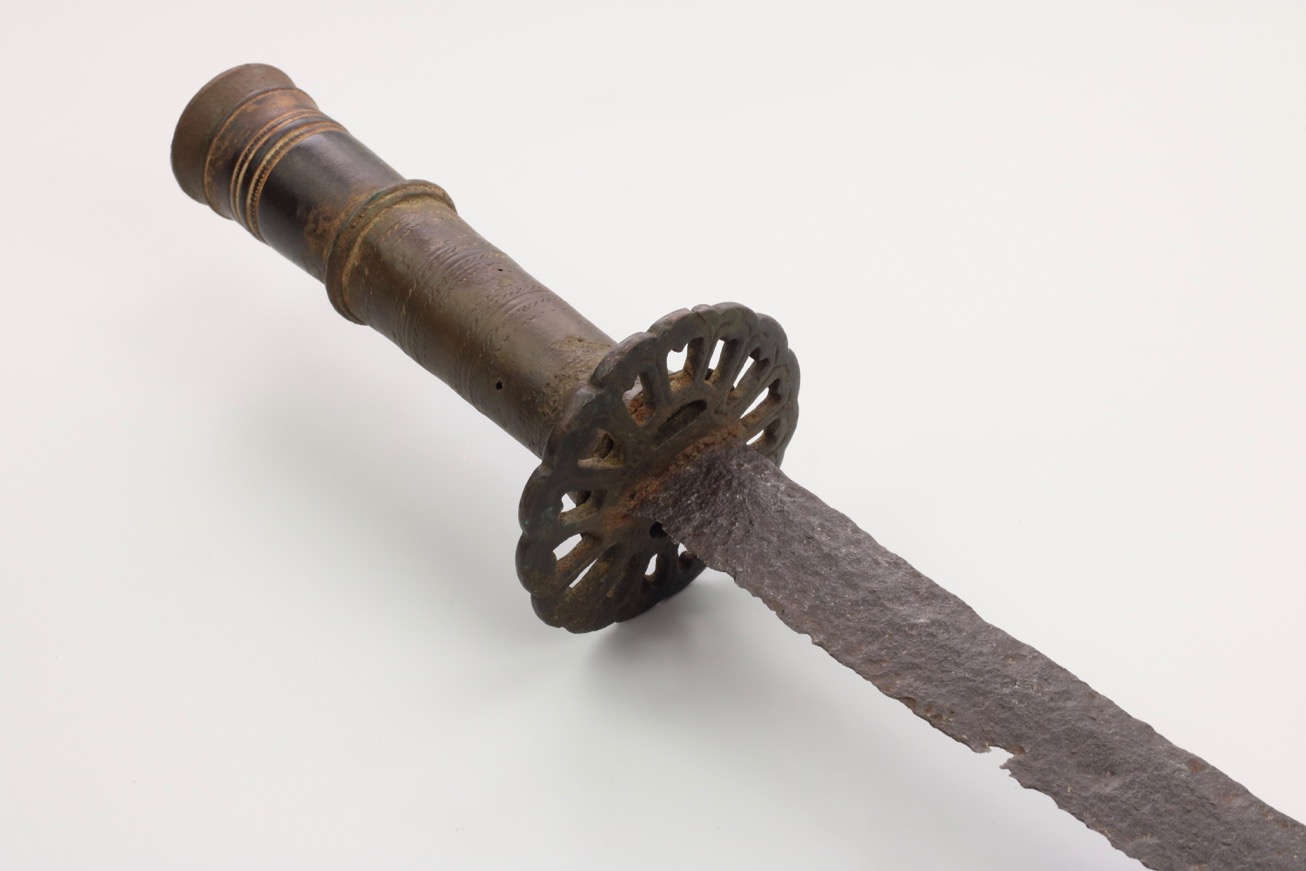

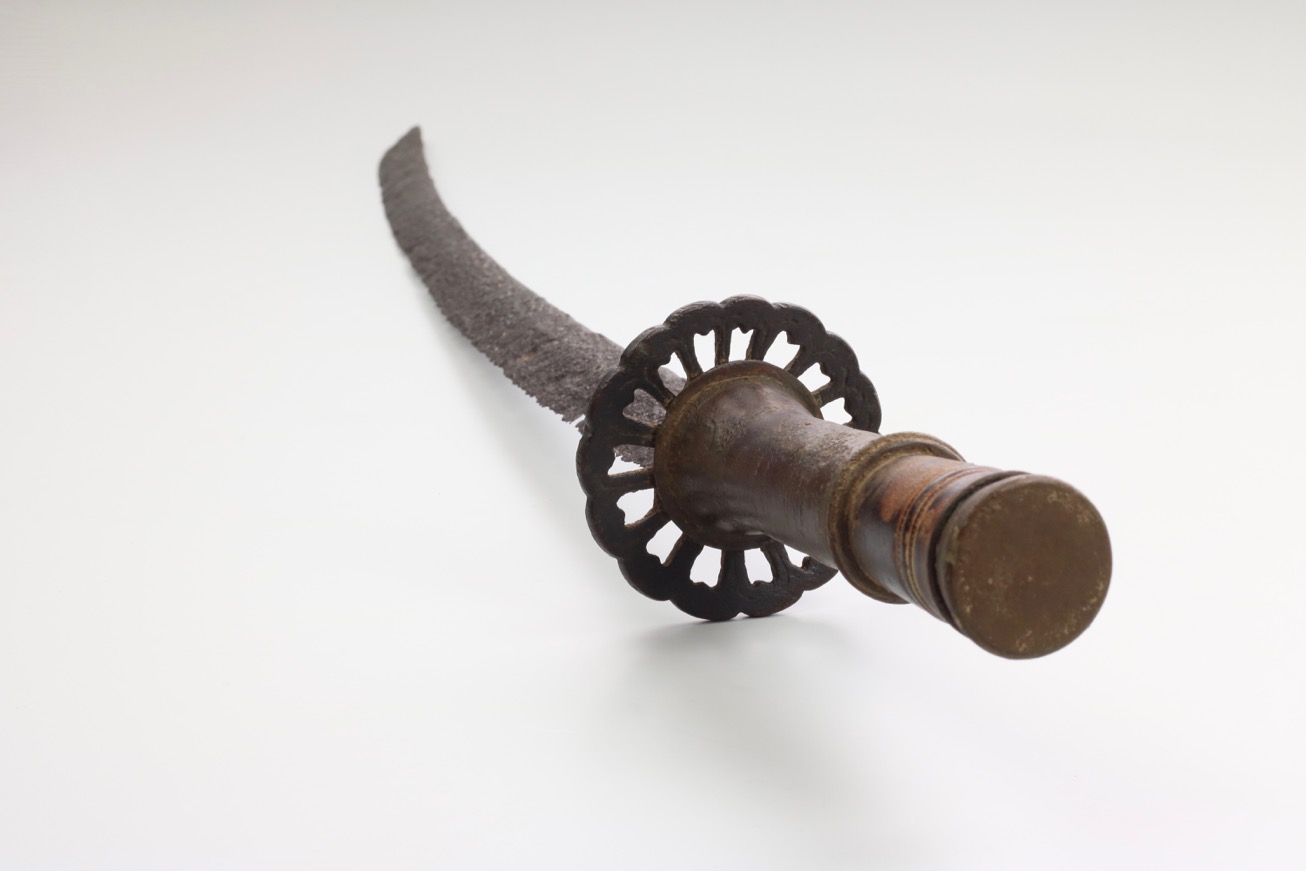
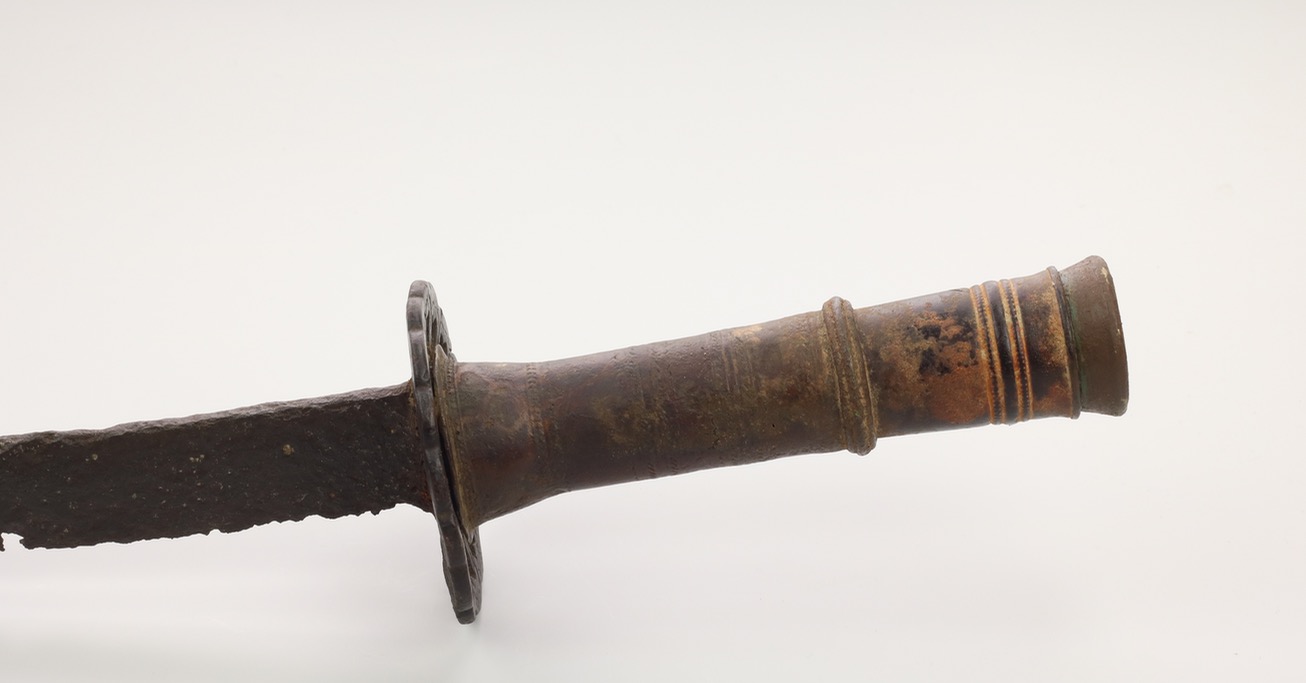

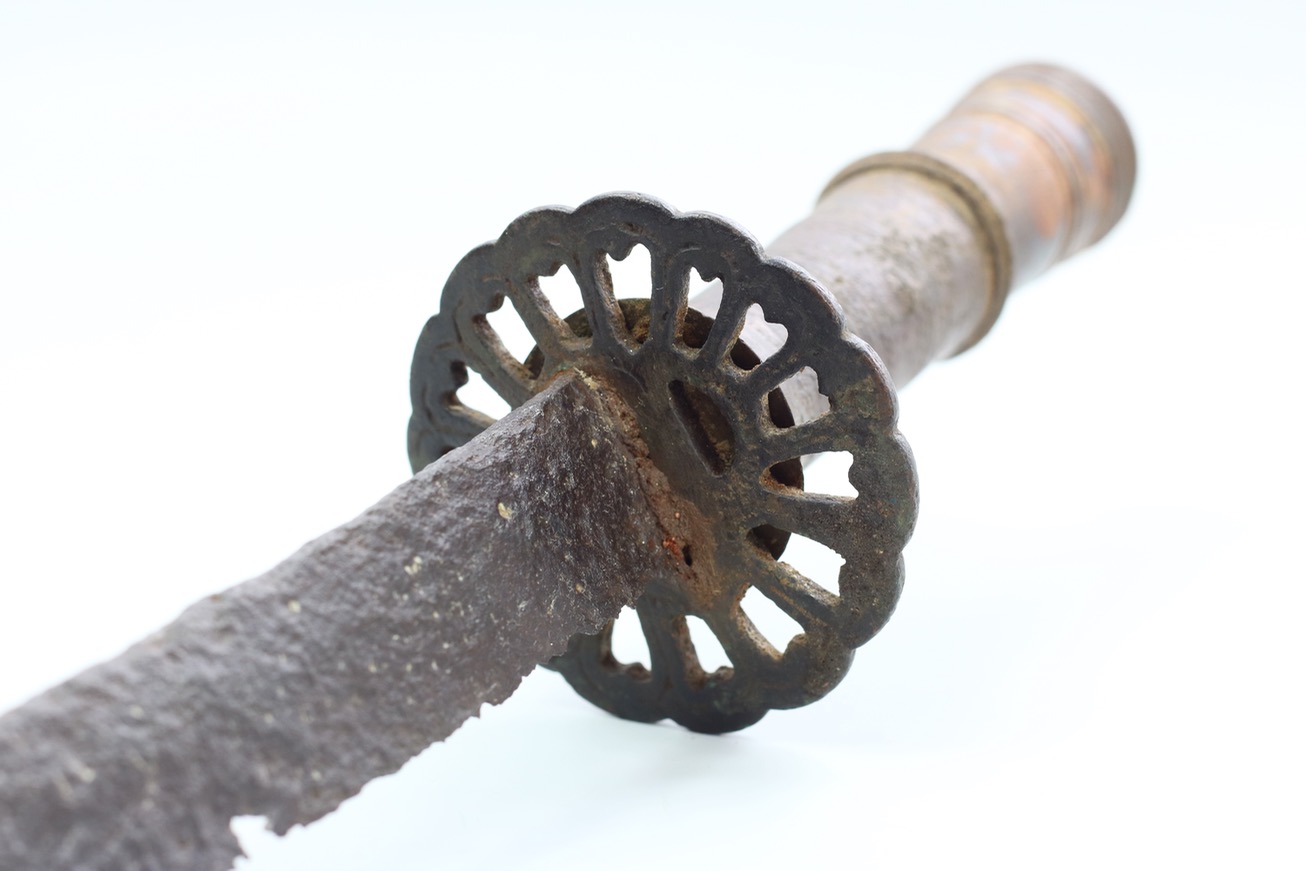
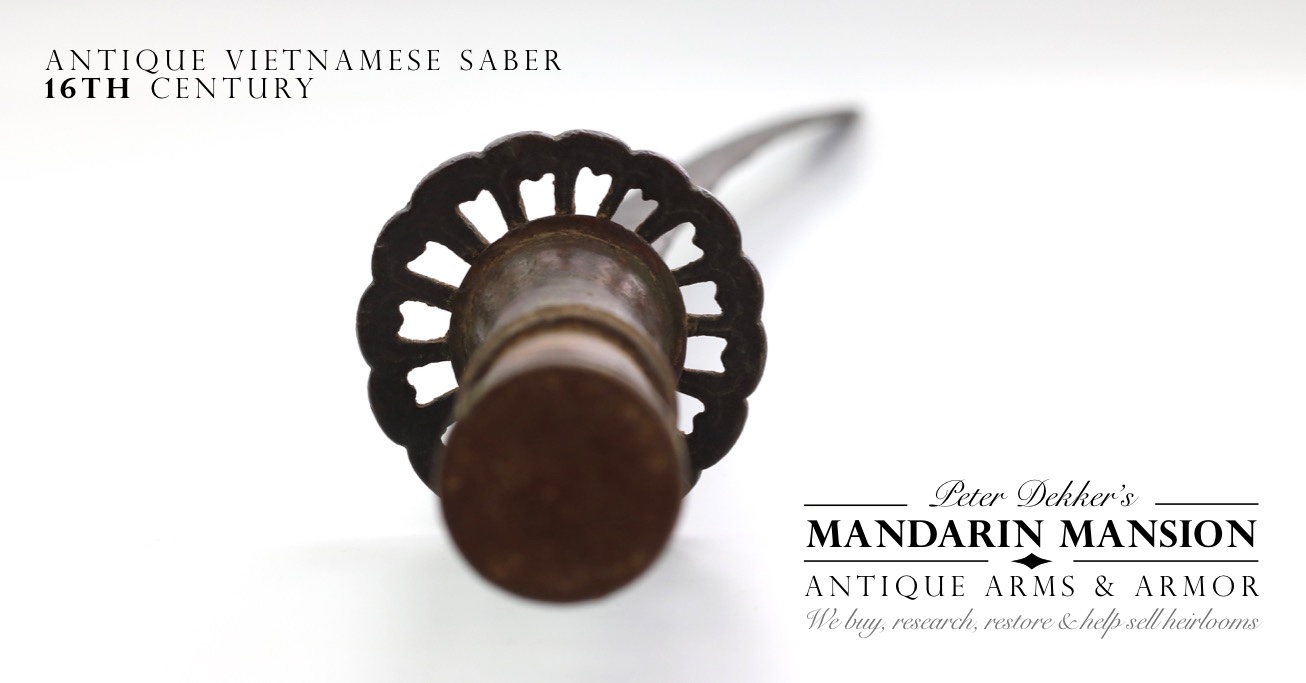
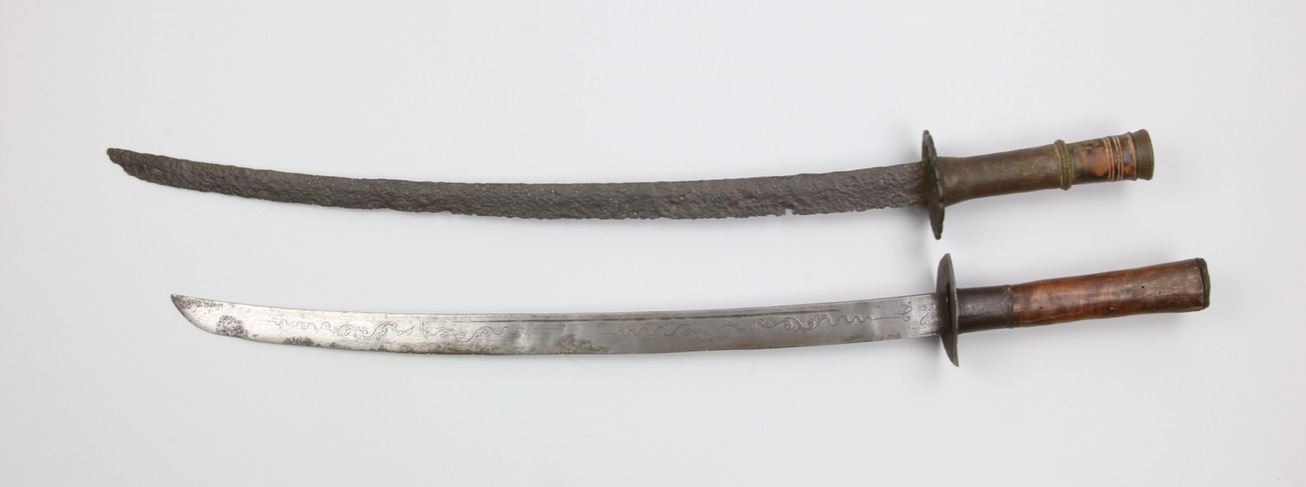
The saber compared to a signed Vietnamese fighting saber of the late 19th century.
An exceedingly rare set with fine mother of pearl inlaid string board
A very rare ceremonial variety with copper scabbard inlaid with different alloys, and a brass blade.
Collected by a Russian prince from the hill peoples of central Vietnam in 1892.

